The gate to an ancient temple of a male fertility god is uncovered after 2,100 years in Egypt
Archaeologists have found a secret entranceway in an Egyptian temple that is about 2,100 years old.
The gate – on the west side of the historic Athribis site near Sohag, Egypt – was originally 18 meters high.
It is a stunning example of an Egyptian ‘pylon’, with two towers flanking a main entrance.
The entrance leads to a previously unknown room, probably a storage room for kitchen utensils and amphora: large oval storage vessels with two handles.
In addition, hieroglyphic inscriptions and intricate carvings adorn the outer facade and interior walls of the room.
The researchers are confident that the chamber leads to a temple, although further excavations will be needed to prove this.
Experts believe the structure was built in the 2nd century BC in Athribis, previously a thriving Egyptian city.
At the time, Egypt was ruled by the Ptolemaic dynasty, a royal house that controlled ancient Egypt until it was absorbed into the Roman Republic in 30 BC.
Archaeologists have found a secret entranceway into a 2,000-year-old Egyptian temple. It is a beautiful example of an Egyptian ‘pylon’, with two towers flanking a main entrance
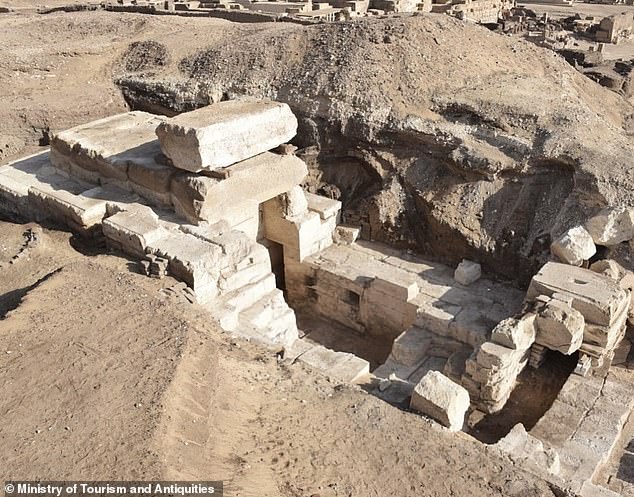
The entrance leads to a previously unknown room, probably a storage room for temple utensils and amphora – a storage vessel typical of the ancient world
The entrance and chamber were uncovered by researchers from the University of Tübingen, supported by the Egyptian Ministry of Tourism and Antiquities.
Dr. Mohamed Ismail Khaled, Secretary General of the Supreme Council of Antiquities, described the discovery as “the first core for unveiling the rest of the elements of the new temple at the site,” Asharq Al-Awsat said.
“This finding is particularly important as it marks the first step in uncovering the remaining elements of the temple,” Egypt’s Ministry of Tourism and Antiquities said in a Facebook post.
The room, which is about six meters long and three meters wide, has an entrance decorated with newly found reliefs and hieroglyphic inscriptions.
The inscriptions depict the Egyptian fertility god Min and his wife Repit, usually depicted as a lioness, and their son, the child god Kolanthes.
In one inscription, these Egyptian deities receive offerings from a king, who researchers believe is Ptolemy VIII from the 2nd century BC.
The researchers therefore believe that the Athribis Temple was built during the reign of Ptolemy VIII (who died in 116 BC) as a center of worship for the revered family.
The figures are also surrounded by structures of astronomical symbols that act as ‘celestial stars’ to measure the hours of the night.
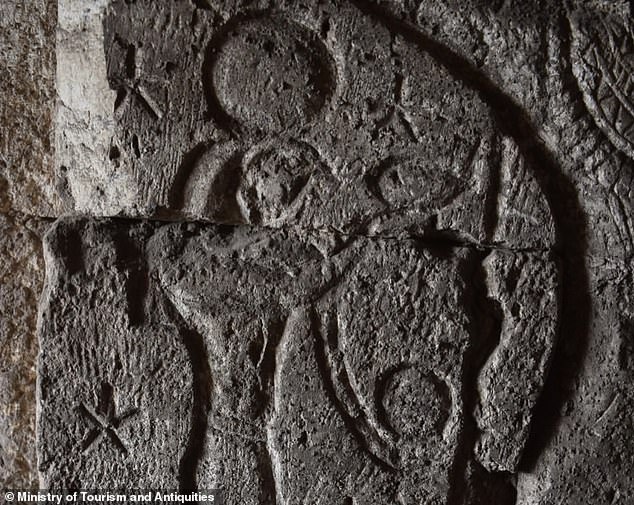
Inscriptions lead researchers to believe that the temple was dedicated to the Egyptian fertility god Min and his family
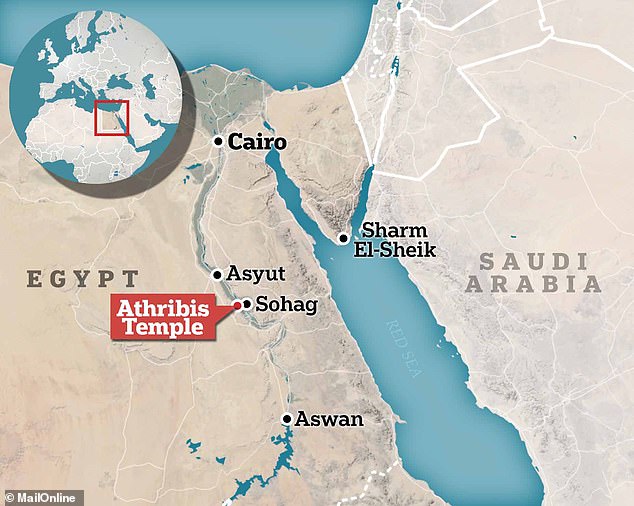
The gate was discovered on the west side of the Athribis Temple near Sohag, Egypt
Meanwhile, a second door on the mast’s facade leads to a previously unknown staircase that climbed at least four flights of stairs to the upper floor, but has now been destroyed.
Further excavations at the Athribis Temple will now focus on finding traces of the suspected temple that lies behind the chamber, likely a refuge for the city’s inhabitants.
“The mission will complete its work on site to fully expose the remainder of the temple during the coming quarrying seasons,” the Ministry of Tourism and Antiquities said in a statement.
It is thought that in its heyday the temple was 51 meters wide and had mast towers, each up to 18 meters high.
Today, only about five meters remain of the towers, which probably fell victim to quarrying in the 8th century AD.
Although Athribis was occupied during the later dynasties, the ancient Egyptian city only gained real power during the early Ptolemaic kingdom.
The Ptolemaic dynasty was Egypt’s last before it became part of the Roman Republic, which preceded the all-powerful Roman Empire.
The dynasty was founded in 305 BC after Alexander the Great of Macedon conquered Egypt in 332 BC and one of his generals, Ptolemy, became Ptolemy I.
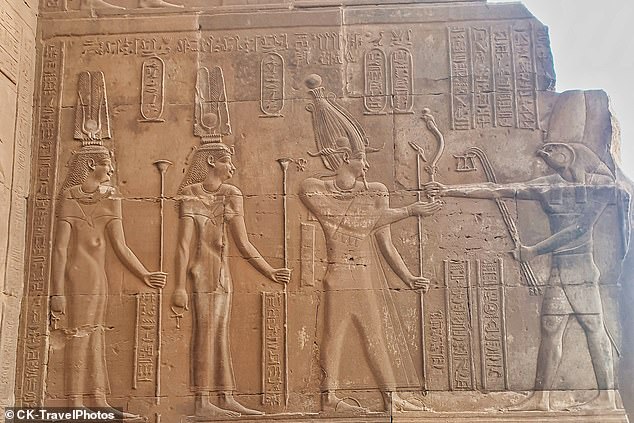
The Athribis Temple was built during the reign of Ptolemy VIII (who died in 116 BC) as a center of worship for the revered family. Ptolemy VIII is depicted here with Cleopatra III and Cleopatra II before Horus, a god in the form of a falcon (archive photo)
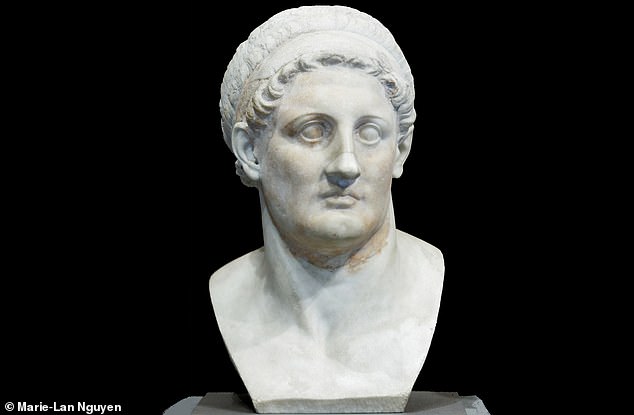
The Ptolemaic era is one of the best-documented periods of ancient Egypt, meaning the dates of major political events are well known. Pictured: a bust of Ptolemy I, founder of the dynasty
Leadership was passed down through Ptolemy’s descendants and ended with Cleopatra VII, one of history’s most famous queens.
Known as both a seductress with a captivating personality, Cleopatra VII used her charms to seduce Julius Caesar to strengthen the Egyptian alliance with Rome, and then his second-in-command, Mark Antony, whom she married.
With the arrival of the future Roman emperor Augustus, Antony committed suicide in 30 BC under the false impression that she was dead.
After burying him, 39-year-old Cleopatra took her own life, but how is uncertain.
It is believed that the doomed couple was buried together, although the whereabouts of their resting place remains a mystery.
